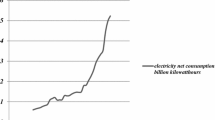Abstract
Indian economy is vitally linked with the monsoon because of its water resources. A large part of the country gets more than 75% of the annual rainfall during the four months, June to September.
The production of foodgrains depends fairly closely on the amount and distribution of monsoon rainfall over the country. Further the generation of hydro-electric power from monsoon rain water has been traced over the last 20 years. While hydro-electric power constitutes about 40% of power from all sources, with proper surveys and planning additional hydro-electric power projects this percentage could, perhaps, be further substantially increased. The distinct advantage of hydro-electric power over all other types of power is that its source, i.e. monsoon water, is perennial, although it shows some fluctuations from year to year. The power of the monsoon winds at four and two stations on the West coast and in the interior resp. has been assessed on the basis of five years hourly wind data. The wind at New Kandla on the West coast has a good potentiality for power. The wind power could be used for electricity, grinding corn and drawing water. On the debit side, Indian economy suffers heavy losses due to floods and droughts almost every year.
The population of India is increasing at a much faster rate than the total foodgrains production and soon the country may be facing a serious economic crisis. A large part of the monsoon water which is currently unutilized should be held at suitable locations for irrigation and possible power generation.
Similar content being viewed by others
References
GOLDING, E.W. and HARRIS, R.I.: The generation of electricity by wind power. London, E. & F. N. Spon Ltd. 1976.
MOOLEY, D.A.: Normal density distribution in the atmosphere. Ind. J. Met. & Geophys. (2) April, 1951, 127–137 (1951).
SAHA, K.R. and MOOLEY, D.A.: Fluctuations of monsoon rainfall and crop production. In: Climatic change and food production. TAKASHI, K. and YOSHINO, M.M. (eds.), Univ. of Tokyo Press, Tokyo, pp.13–80, 1978.
Times of India: The Times of India Directory and Yearbook. (Editor:SHAM LAL) 1977.
TOYNBEE, A.: The study of history. London, Oxford University Press 1972.
Author information
Authors and Affiliations
Rights and permissions
About this article
Cite this article
Saha, K.R., Mooley, D.A. & Saha, S. The Indian monsoon and its economic impact. Geojournal 3, 171–178 (1979). https://doi.org/10.1007/BF00257706
Issue Date:
DOI: https://doi.org/10.1007/BF00257706




